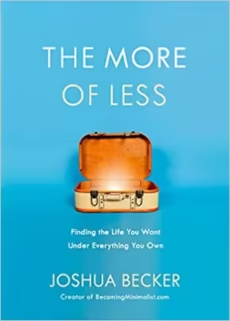Understanding the Slow-Living Movement
The slow-living movement emerged as a response to the increasingly fast-paced lifestyle many individuals navigate today. Originating in the late 1980s, the movement gained significant traction in the 2000s as societal awareness grew regarding the adverse effects of constant busyness and hurried living. In contrast to the rapid consumption of resources, slow living promotes a more intentional and reflective approach to daily existence, encouraging individuals to embrace simplicity and mindfulness.
At its core, the slow living philosophy advocates for deceleration across various aspects of life, including work, consumption, and even relationships. By prioritizing quality over quantity, practitioners of slow living seek to cultivate deeper connections with their surroundings, fostering a heightened appreciation for both the mundane and the extraordinary. This rebalance allows people to engage with life more meaningfully, ensuring that they remain present to savor each moment rather than rushing to the next task on their agenda.
The slow-living movement is not merely an antidote to modern stress, but rather a call to live life with intention, aiming to reclaim the joy found in everyday experiences. As more people explore the tenets of slow living, they discover a pathway to a more profound and fulfilling way of life.
Step into the world of learning and personal growth with the Centre of Excellence!
The Historical Context of Slow-Living Movement
The slow-living movement, characterized by a deliberate and mindful approach to life, has roots that intertwine with various cultural and social phenomena throughout history. Its modern conception can be traced back to the anti-fast food movement that emerged in Italy during the late 20th century. In response to the rapid proliferation of fast food chains, particularly McDonald’s, Italians sought to reclaim their culinary traditions and promote local, sustainable food practices. This movement argued that quality should triumph over speed, emphasizing the importance of savoring meals as a shared experience rather than a hurried necessity.
This resistance to fast food was not solely about cuisine; it reflected a broader desire to slow down and reconnect with cultural heritage. The establishment of the Slow Food movement in 1986, initiated by Carlo Petrini, aimed to counter the homogenization of global cuisine while advocating for the preservation of local food systems. This movement garnered international attention and celebration, highlighting the value of artisanal production, biodiversity, and the pleasures of eating.
Core Principles of Slow-Living Movement
The slow living movement is grounded in a set of core principles that emphasize a more intentional and meaningful way of life. At its essence, slow living advocates for intentionality, urging individuals to be conscious of their choices and how they impact their overall well-being. This involves making deliberate decisions that align with personal values and foster a sense of fulfillment. In a fast-paced world, prioritizing intention allows for greater control over one’s life, encouraging individuals to engage in activities that resonate with their true selves.
Simplicity stands as another fundamental principle of slow living. It involves decluttering both physical spaces and mental processes, thereby creating an environment that is free from unnecessary distractions. By focusing on fewer possessions and commitments, one can reduce stress and foster clarity. This principle encourages individuals to appreciate the value of minimalism, where quality takes precedence over quantity, promoting a more serene and balanced existence.
Mindfulness plays a pivotal role in the slow-living philosophy. Individuals are encouraged to be present in each moment, cultivating an awareness of their surroundings and actions. This heightened state of consciousness enhances emotional well-being and allows for deeper connections with people and experiences. Practicing mindfulness can lead to enhanced creativity, improved relationships, and greater overall satisfaction in life.
Lastly, sustainability is an integral principle of the slow-living movement. It emphasizes the importance of making choices that not only benefit the individual but also contribute positively to the environment and society. By considering the long-term consequences of actions, individuals can adopt practices that promote ecological well-being, such as reducing waste and supporting local economies. Together, these core principles of slow living provide a robust framework that helps individuals navigate their lives with purpose, clarity, and kindness.
Benefits of Adopting a Slow-Living Lifestyle
Adopting a slow living lifestyle offers a myriad of benefits, significantly impacting both the individual and the broader community. One of the most prominent advantages of this lifestyle is the marked reduction in stress levels. By prioritizing simplicity and mindfulness, individuals can cultivate a more peaceful state of mind. Studies have shown that mindfulness practices associated with slow living can lower cortisol levels, leading to more relaxed and balanced emotional states.
The More of Less by Joshua Becker
The More of Less – the ultimate guide to liberating yourself from the shackles of excess, simplifying your life, and experiencing the pure joy of living with less! Are you tired of feeling weighed down by all your stuff?
In addition to stress reduction, slow living enhances mental well-being. When people slow down and engage more intentionally with their surroundings, they often find heightened levels of happiness and contentment. Personal anecdotes abound, with individuals noting transformations such as improved focus, greater creativity, and increased appreciation for everyday moments. The emphasis on living in the present fosters a deeper connection not only with oneself but also with others.
Stronger relationships are another significant benefit of slow living. As individuals learn to prioritize quality over quantity in their interactions, they often experience deeper connections with family and friends. This approach encourages active listening and genuine engagement, enhancing communication and understanding. Many advocates of slow living report experiencing more meaningful conversations and shared experiences, reinforcing the bonds that matter most.
Furthermore, embracing a slow living lifestyle fosters a profound connection with nature. Individuals often find themselves spending more time outdoors, appreciating the intricacies of the natural world. This appreciation can cultivate empathy toward the environment and promote sustainable living practices, leading to a more harmonious relationship with planet Earth. Many practitioners of slow living find that nature plays a pivotal role in grounding their experiences, reminding them of the beauty of simplicity.
Practical Tips for Incorporating Slow Living
Incorporating slow living into daily routines can significantly enhance one’s quality of life. The essence of slow living revolves around intentionality and mindfulness, allowing individuals to savor experiences rather than rushing through them. Here are several actionable tips to consider.
One of the first areas to reflect upon is meal preparation. Instead of opting for pre-packaged or fast food options, invest time in preparing your meals from scratch. This not only promotes healthier eating habits but also allows for the exploration of new recipes. Consider designating a specific time each week for meal planning and shopping. Embrace the process by enjoying the aroma of spices, the vibrant colors of fresh produce, and the satisfaction of cooking a meal with your own hands. This practice fosters a sense of gratitude and presence.
Reducing screen time is another crucial aspect of slow living. In our digital age, it is easy to get lost in the myriad of notifications and endless scrolling. Designate certain hours of the day as “screen-free” times to help reconnect with yourself and your surroundings. Use this time to read a book, engage in a hobby, or have open conversations with family and friends. Cultivating these habits not only enhances interpersonal relationships but also promotes mental well-being.
Practicing mindfulness in daily activities is fundamental to slow living. Start by incorporating mindfulness exercises into your routine, such as meditation or simply taking deep breaths while enjoying your morning coffee. Being present in the moment allows you to appreciate life’s finer details, from the beauty of a blooming flower to the sounds of nature. Make an effort to spend time outdoors, whether it’s taking a leisurely walk in the park or sitting in your garden. Nature offers a healing backdrop, supporting a slower pace of life and fostering a sense of tranquility.
By integrating these practical strategies into your everyday life, you can begin to embrace the slow-living movement and cultivate a more mindful existence.
Mindfulness Diploma Courses
Discover the power of mindfulness with our Diploma courses offered by the Centre of Excellence. These carefully structured programs are designed to guide you through the fundamentals of mindfulness, helping you cultivate a balanced, focused, and fulfilling life.
Slow Living and Minimalism: A Perfect Pair
The slow-living movement has gained traction in recent years, emphasizing a lifestyle that prioritizes mindfulness, intentionality, and simplicity. Central to this philosophy is the concept of minimalism, which advocates for reducing excess and curating one’s possessions, thoughts, and experiences for a more fulfilling existence. Together, slow living and minimalism create a harmonious synergy that enables individuals to navigate life with greater clarity and purpose.
At its core, minimalism encourages individuals to declutter both their physical environment and mental space. This process involves critically assessing belongings and eliminating items that do not serve a meaningful purpose or provide joy. By adopting a minimalist mindset, individuals can alleviate the stress and distractions associated with material possessions, allowing them to focus on what truly matters. This aligns seamlessly with the principles of slow living, where the goal is to cultivate deeper connections with oneself, loved ones, and the world at large.
The relationship between slow living and minimalism extends beyond mere physical decluttering; it also encompasses emotional and cognitive aspects. By simplifying one’s life through minimalism, individuals can foster a slower pace that encourages mindfulness. This intentional approach helps in carving out time for reflection, enjoyment, and genuine experiences, free from the chaos often induced by modern-day consumerism. As more people embrace these ideologies, the interplay between a minimalist lifestyle and slow living becomes increasingly apparent, leading to enhanced well-being.
In merging slow living with minimalism, individuals can craft a life that not only emphasizes simplicity but also fosters a genuine appreciation for the present moment. Through this intentional simplicity, one discovers the profound richness that comes from leading a life less burdened by excess, ultimately resulting in a more meaningful and purposeful journey.
Challenges and Misconceptions about Slow Living
The slow-living movement, celebrated for its emphasis on mindfulness and intentionality, is often met with various challenges and misconceptions that can hinder individuals from fully embracing its principles. One prevalent misconception is that adopting a slow living lifestyle requires a complete overhaul of one’s life and schedule. Many believe that to live slowly, one must disengage entirely from modern conveniences or drastically reduce personal productivity. However, this is a misunderstanding; slow living is not about forfeiting productivity but rather about prioritizing quality over quantity. It encourages individuals to engage deeply with their tasks, fostering a sense of fulfillment even as they navigate busy schedules.
Societal pressures also play a significant role in shaping perceptions of slow living. In a fast-paced world that often glorifies busyness, the notion of slowing down can be met with skepticism or even derision. Many people feel compelled to adhere to the relentless pace of modern life, which emphasizes constant movement and achievement. This pressure can create anxiety for those seeking a slower, more mindful existence. To counteract this, individuals must cultivate a firm understanding of their values and establish boundaries that support their goals of living intentionally. Connecting with like-minded communities can also provide vital support in navigating these societal expectations.
Another challenge is the potential for feelings of guilt when stepping back from obligations to prioritize personal well-being. People may wrestle with the notion that they are letting others down by not participating in every social engagement or overcommitting themselves to various projects. However, it is essential to recognize that asserting one’s need for rest and reflection is a vital component of maintaining mental and emotional health. Mindfully creating space for oneself ultimately leads to greater happiness and productivity in the long run, allowing individuals to fully embrace the transformative journey of slow living.
Step into the world of learning and personal growth with the Centre of Excellence!
Real-Life Stories of Slow-Living Practitioners
Slow living is not merely a concept; it is a lifestyle embraced by many who seek to achieve a deeper sense of fulfillment in their everyday lives. The experiences of individuals who have adopted this approach offer valuable insights into how the slow-living movement can manifest in various forms. For instance, Sarah, a former corporate manager, decided to leave her high-pressure job to open a local bakery. With a focus on artisanal methods and seasonal ingredients, Sarah discovered joy in the simplicity of baking. By engaging with her community, she not only nurtured her passion but also fostered meaningful connections with her customers. This transition epitomizes how slow living can transform one’s work into a source of personal satisfaction.
Another compelling story comes from Tom, who once led a fast-paced urban life, filled with stress and long commutes. After experiencing burnout, he relocated to a rural area where he could immerse himself in nature. Tom adopted practices such as growing his vegetables and engaging in mindfulness activities, like meditation and yoga. Through this lifestyle change, he has cultivated a sense of peace and appreciation for life’s small moments, exemplifying how slow living can enhance well-being and mental health.
On the other hand, Jane’s journey reflects a different aspect of slow living. As a busy mother of three, she found herself overwhelmed by daily responsibilities. In her desire to slow down, Jane established a family ritual of weekend adventures, where technology is set aside, allowing them to connect through outdoor activities like hiking and camping. This intentional disconnection from digital distractions has strengthened family bonds while instilling a lasting appreciation for nature and shared experiences. Each story emphasizes the adaptability of the slow living principles and illustrates how individuals can craft their unique paths toward a more mindful existence.
The Future of Slow Living in a Fast-Paced World
As society continues to accelerate, the slow-living movement emerges as a counterbalance to the demands of modern life. The increasing pace of technology, work, and everyday activities has led many individuals to seek a more deliberate approach to existence. Becoming aware of the consequences of a fast-paced lifestyle is fuelling a growing appeal for slow living, driving society towards more mindful choices that prioritize well-being over productivity.
In a world overwhelmed by information and constant connectivity, the slow living philosophy encourages individuals to engage fully with their surroundings. This trend fosters a reconnection with nature, promotes quality over quantity in relationships, and emphasizes the importance of living in the moment. Such principles are becoming increasingly relevant as consumers begin to reject the superficiality fostered by consumerism and instead gravitate toward authenticity and sustainability.
As the movement gains visibility, it is likely to influence various lifestyle trends and cultural practices. From the rise of minimalist living to the demand for artisanal products, slow living is shaping consumer preferences toward more meaningful purchases and experiences. Educational programs focused on mindfulness and wellness are also emerging, prioritizing emotional health and instilling practices that align with the slow-living ethos in future generations.
Furthermore, social media accounts and online communities dedicated to sharing slow living practices are proliferating, allowing individuals to connect and support one another in their journeys towards intentional lifestyles. This networking has the potential to create significant shifts in societal norms, where taking time for oneself becomes not just accepted but celebrated.
In conclusion, as we navigate the increasingly fast-paced world, the slow-living movement appears poised for expansion. It offers a powerful antidote to the chaotic rhythms of modern life, encouraging individuals and communities to embrace a mindful existence. By incorporating these principles into our daily lives, we can create a more balanced, sustainable future that values presence and connection over speed.
Body, Mind, And Soul For A Fulfilled Life!






